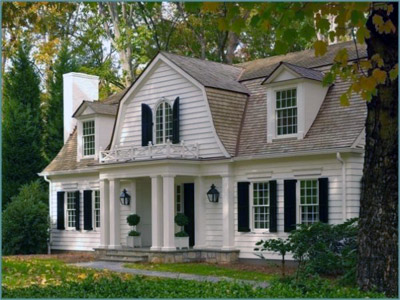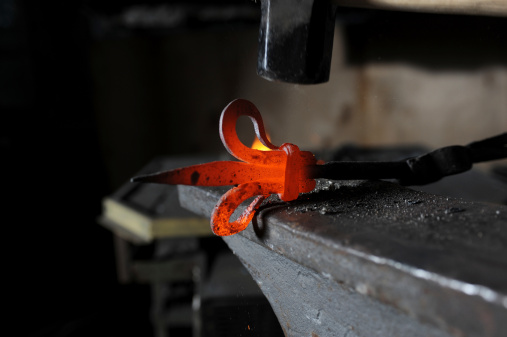Exterior Shutters: What's Your Function?
Published: April 20, 2020
Choosing the style of shutter you want for your home is the fun part of shutter shopping. After that, you will need to consider an important question: Will these shutters actually function? Shutters were originally designed to close over and protect windows, after all. Do you want your shutters to do that?
The Question of Functionality
The Functionality of your shutters is an important consideration. It will impact on the amount of hardware needed, the care required in measuring for them, and in the maintenance of the shutters. There are basically three schools of thought on the subject.

No Functionality at All
If you want your shutters to be purely decorative, then you probably do not want to worry about the functionality at all. The shutters are there to accent the window and give the entire house a distinctive touch, and that is all. There are some advantages to this approach. One is that very little shutter hardware is required. And another is that the shutters do not need to be attended to or maintained much. Once the shutters are nailed into place, a happy homeowner could decide that is enough, and move on with life.
While simplicity is good, there is one important thing to consider. That is the idea that some things do not need to be maintained. They are bought, put in place, and then forgotten about. Well, friends, that is just not true.
Everything needs maintenance. Everything can and will break. All things under the Sun made by human hands need to be looked after, some things more than others, but they all do. Wind, weather, and the sun are relentless. When things get hot, they tend to expand. When they cool, they tend to contract. That tiny motion of expansion and contraction is very basic, very important, and cannot be ignored. The results will catch up with your shutters. Don't forget Insects and bacteria. Those little guys never let up either.
However, the biggest factor in damaging your shutters, or your home itself, is usually water. The humble raindrop is a powerful thing! Once water gets around, on top of, or into something, that thing will usually fall apart. It's the expansion and contraction of Water inside that does the real damage.
This is especially relevant in the discussion of Shutters. If a Shutter is non-functional, it cannot move, and it usually is nailed in place flush along a wall. In this case, there is no air flow around the shutter, or very little. So, when water gets around, on top of, and into the shutter, there is no air-flow to bring warm air around that shutter that would normally evaporate the water. Water seeps in, usually at the back of the shutter where it is nailed in place, expansion and contraction open cracks in the shutter, bacteria and bugs get it, and you get rot. Soon, you have to replace your shutter.
If you do want to a completely non-functional, purely decorative shutter, at least think about how the shutter might be maintained. Make it possible for the shutter to be removed if needed, and consider that a little airflow around or behind the shutter might help things considerably. That's why louvered shutters are a popular choice for purely decorative shutters. They at least let some air in and through the shutters, or at least let humidity out.
Not Functional, But Looks Like it Could Be
Another option is to lend your shutters the appearance of functionality. The hardware is there where it should be, the shutter is mounted correctly and looks good, but the whole is not meant to actually operate. The shutter looks like it could move, but it cannot.
This method can lend your house a very authentic look, and the fixed but immobile shutters require little attention. Indeed, you can cut a few corners this way, and not sweat some details. The measurements of the shutter need not be exact, for example, as it does not actually have to close over the window. This, by the way, is a good technique to remember if you need to rotate some shutters from one part of the house to another (say if some shutters are being repainted, and you use shutters from a less visible portion of your home to stand in for the ones being worked on). You can even save on buying some hardware, as you will not need the usual bolts in place that would normally lock closed shutters in place, nor rings or handles used to pull the shutters closed either. Hinges and Shutter Dogs would be all you normally would need, to mount the shutter and hold it in place. As an extra precaution, to keep the shutter immobile, some Bullet catches (or Hidden Stays) behind the shutter are a worthwhile investment. How a Bullet Catch looks is not the point, as it is usually never seen. Its job is to just hold the shutter in place. In this application, the shutter dog in front of the shutter is more ornamental. It's the shutter dog's job to look good, and lend an air of functionality.
One good point in the just-looks-functional point of view is that the shutter can be removed if needed. It is not forever nailed in place. If it needs to be taken down and repainted, it can be, for example. And, placed as it is so that it looks functional, it is not flush against the wall of the house. It is out just a bit from the wall, allowing air and water to flow through and away from it. That is important. Water does not collect on the shutter and the air flow keeps it dry. That helps to preserve the shutter, and lets you get the years of use from it that you expect and deserve.
Functional
The more demanding, and more satisfying, route to go is the functional shutter. If you are going to get the best shutters, you may as well get the most out of them and make them actually work. Operable shutters can also help save on heating and cooling costs. Climate control is, after all, their original purpose.
You will need hinges of course, but also a slide bolt or hook to let the shutters lock together when closed, some handles to make pulling them closed easier, and some shutter dogs to hold them in place once open. So the investment in hardware is greater.

The care in installation is also more demanding. Measuring for your shutters needs to be done carefully and allotments made for shutter movement. This is not impossible, it just has to be done correctly and with care. Measurements for each window need to be made. The windows on your home might look all the same, but there is a good chance that there are some differences between them that you never expected. So, take good notes.
When the shutters are closed, it is not unusual for them to rattle a bit in windy conditions. This is normal, and better still you can do something about it. Slim wooden Shims are traditionally placed between the moving shutter parts and your window casement. They help to immobilize the shutters, so keep a few handy.
The basic point here is that functional shutters takes a bit more time and attention. Of course, any decent home takes time and attention to maintain and shutters are not so demanding. Once properly installed, you basically have two modes of operation: open or closed. Close them when the weather is really bad, but otherwise leave them open. That's it. You have just completed shutter school. You probably already keep an eye on your house anyway, noting where paint is needed or the occasional repair. Just pay a little attention to the shutters now and then. The care you take will pay dividends later, in all aspects of maintaining your home.
The detail and charm that shutters add to your home is worth it! Anyone can nail vinyl shutters to a wall, but working shutters on your home shows love and an attention to detail. Plus, the discerning eye will see them and be impressed! Even if the shutters only appear to be functional, details like that count, and details make a great home.
Build your new Custom and get a Free Instant Quote Today
Our state of the art designers allow you to design and build completely customized to fit your exact needs.
Questions or concerns contact us here or via 412.641.0177 .
Build an Instant QuoteGet Started Designing Your New Wooden Shutters Today!
Need Help?
Contact Us @ 412.641.0177
Recently Published
Interior Cabinet Door Styles That Elevate Your Kitchen Or Bathroom
Published: November 12, 2025
Why Mortise
Published: October 23, 2025
From Shaker To Raised Panel: Cabinet Door Styles That Transform Your Home
Published: October 08, 2025
How To Match Door
Published: September 30, 2025
Choosing The Right Exterior Shutters: Louvered, Board
Published: September 25, 2025
The Warmth Of Wood: Barn Doors Tailored To Your Home
Published: September 09, 2025
Classic Style, Modern Strength: Custom Wooden French Doors
Published: September 03, 2025
Built By Hand, Designed To Last: Custom Wood Louvered Doors
Published: July 07, 2025
Flat Panel Shutters For Colonial, Craftsman, And Farmhouse Styles
Published: May 28, 2025
Bring Old-World Charm Home With Custom Wooden Louvered Shutters
Published: May 04, 2025




